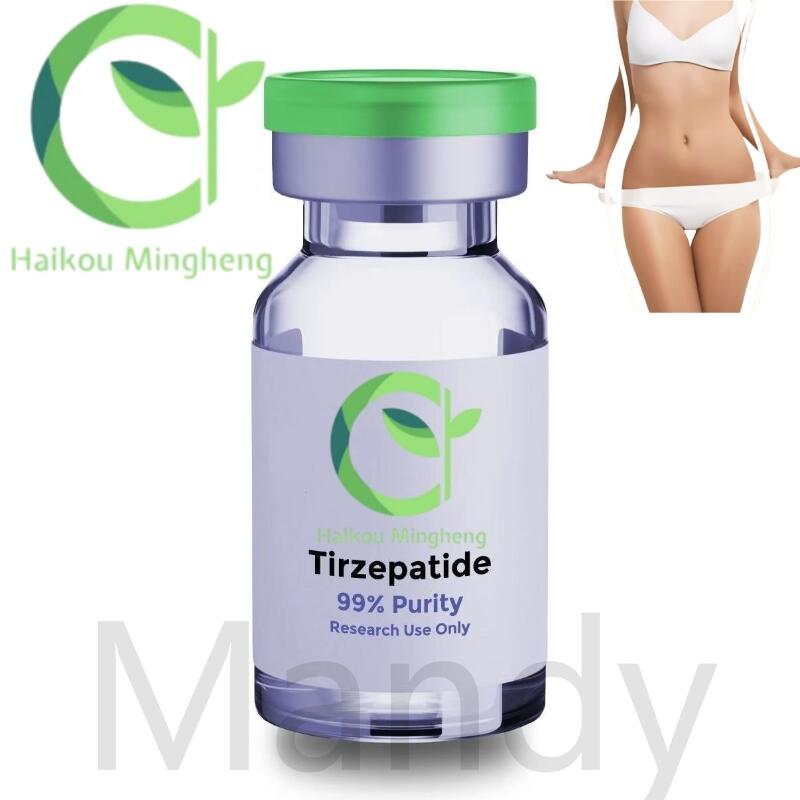How milk protein provides nutritional and functional benefits for food
-
Last Update: 2018-01-22
-
Source: Internet
-
Author: User
Search more information of high quality chemicals, good prices and reliable suppliers, visit
www.echemi.com
At the annual meeting of Chinese society of food science and technology held in Wuxi, the American dairy export association held a dairy forum, inviting Experts from China and the United States discussed the raw material characteristics and innovation opportunities of milk protein Four experts from the American dairy export association, Northeast Agricultural University, Zhongshan University and Fuzhou University discussed how to scientifically apply milk protein to develop new products in the food industry and meet the market demand from different perspectives Sarah Geddes, consultant, American Dairy Export Association Using dairy ingredients to meet consumer demands With the continuous prosperity of China's economy, Chinese consumers, especially urban residents, are facing more health challenges caused by lifestyle changes The application of dairy raw materials can provide consumers with healthier food Improving the protein content of daily diet can help healthy aging It is a global trend that consumers prefer more natural foods with clean labels Dairy products are mostly food products with clean labels, so they are attractive Dairy products can not only bring health, but also enhance the flavor of products, such as in beverages, snacks, dip sauce and food High quality protein should be evenly distributed in three meals a day throughout the adult life cycle For a long time, nutritionists have considered the daily intake of protein or the reference recommended amount However, the optimization of protein should not only consider quantity, but also consider quality and intake timing Even distribution of intake in a day can effectively utilize protein Research results show that breakfast protein content is usually the lowest, and milk protein can help fill the gap In 2020, the elderly aged 65 and above are expected to account for 11.8% of China's total population By 2035, more than 70% of China's population will live in cities According to a health and nutrition survey conducted in China, only less than one fifth of the elderly over 60 years old in China have achieved the recommended protein to energy ratio Whey protein or milk protein can be used in beverages, rice noodles, yogurt, frozen sweets, soups and many other foods to improve the protein content of these foods In 2015, the Canadian Society of dietetics and nutritionists and the American College of sports medicine jointly issued a position statement that young people should eat 20-25 grams of high-quality protein per meal, and middle-aged and elderly people should eat 30-40 grams of high-quality protein per meal It can optimize the synthesis of muscle protein in the whole day by eating the appropriate amount of high-quality protein per meal Through dietary supplement, it can promote the maintenance of muscle volume and muscle function, and help the overweight and obese people to achieve successful weight management Milk protein binding to plant protein can optimize protein quality In 2013, the food and Agriculture Organization of the United Nations (FAO) and the World Health Organization (who) proposed a new method to evaluate protein quality - digestible essential amino acid score (diaas) This new method is more accurate than PDCAAS, which has been used since 1998 According to the diaas method, milk protein can provide all the necessary amino acids, which can be used to bind plant protein and make more effective use of protein Rice, wheat and corn are the main foods of Chinese diet, but they are not completely protein Mix 50 grams of wheat and whey protein to form a complete protein The complete protein can also be obtained by mixing corn and milk protein in the ratio of 40:60 G Whey protein and milk protein are concentrated in different degrees In view of specific applications, many new materials with better application characteristics have also been developed, and their dispersity, thermal stability and gelation have been further improved The thermal stability can be defined as the characteristics of no caking, precipitation, excessive viscosity and glue binding after UHT or autoclave high temperature treatment Milk raw materials not only provide nutrition, but also have various functions in processing For example, the characteristics of frothing in ice cream and desserts, gel properties in cheese, yogurt, emulsification in soup and seasoning are all very good functions Application cases of innovative products Whey protein beverage is a clear beverage made from whey protein isolate The protein content of every 240 ml of beverage is 5g Milk protein concentrate is a better choice if you want the beverage to have a milk tea like state For the beverage as a whole, if the appearance is transparent, the pH value is generally 2.8-3.4 If the beverage is turbid, the recommended range of pH value is 3.5-4.5 Whey protein fish minced sea product this formula can provide 8 grams of protein per 100 grams of food The application of whey protein concentrate can improve the water holding capacity of fish cake gel and prevent the self dissolution of surimi The content of lysine in milk protein cereal flour is relatively low Adding whey protein concentrate can strengthen the content of lysine If it is used to make noodles, the strengthening of milk protein will also make noodles stronger and more elastic The double protein beverage contains 30g protein, part of which comes from whey protein concentrate, part of which comes from soybean protein concentrate The combination of milk protein and plant protein can ensure high protein quality and is more economical The protein in the breakfast bread formula comes from whey protein isolate and plant protein Plant protein includes cereal protein in whole wheat, oats, flaxseed and millet High protein plus whole grain is a popular new product trend in the world According to the survey data, there is a very high growth rate of whey protein products in the world From 2005 to 2010, the annual compound growth rate of whey protein products in the world is 11%, and from 2011 to 2016, the growth rate is as high as 28% Professor Zhou Peng, director of International Joint Laboratory of milk protein functional ingredients, Jiangnan University Design and development of milk protein ingredients based on nutrition and functional characteristics How to adjust the relevant ingredients to better meet the needs of products in the four categories of commonly used milk protein? First, milk protein used in high protein drinks Milk protein, also known as whole milk protein, contains almost all kinds of protein in milk The solubility of whole milk protein concentrate is generally more than 80% - 90% when it is newly produced, but after a few months, even if it is stored in a cool place, its solubility will decline rapidly, which will greatly affect its application in beverages and reduce its solubility in beverages The reason for the decrease of solubility is the aggregation of noncovalent bonds and the promotion of aggregation by calcium If we want to improve its solubility, we can maintain its stability by adjusting calcium and the equilibrium state of micelles The strategy adopted, on the one hand, is decalcification When the decalcification rate reaches 20%, the dissolution stability is greatly improved The effect of decalcification by acid is more simple and efficient than that by ion exchange Acid regulation consists of two steps The first step is simple acidification After acidification, part of the calcium in the whole micelle will be free from the original form of micelle calcium phosphate to the solution, and the liquid system of milk will be partially removed in the process of membrane filtration In this way, the solubility and solubility stability of dry powder will be greatly increased In the later stage, the pH value will be adjusted back, and the solubility will be improved better The whole milk protein concentrate after acidification is transparent, which is a good choice for developing transparent protein beverage At the same time, its foaming and emulsifying properties have also been improved Second, whey protein used in infant formula milk powder Infant formula milk powder was mainly spray dried milk powder at first, but later found that the difference between human milk and cow's milk was very large The whey protein content of human milk was obviously higher than that of milk Therefore, infant formula milk powder is gradually changed to use whey protein ingredients In recent years, the application of whey protein peptide has been increased Whey protein peptide is added to infant formula milk powder mainly because many infants have allergic reaction to whey protein of cow's milk, and in consideration of digestion and absorption, whey protein peptide is used instead of whey protein One problem is that if the degree of hydrolysis of peptide is not well controlled, it is easy to produce product caking In addition, compared with human milk, the content of α - casein in milk is very high, the content of α - casein in milk is low; the content of α - casein in human milk is low, and the content of β - casein is high The improvement of technology can improve the yield of whey protein and obtain β - casein at the same time Most of the first whey is extracted from the remaining whey which is used to make cheese Now, the separation of whey and casein can be realized through membrane technology Through membrane filtration and temperature reduction to 4 ℃, the product with the ratio of whey protein to β - casein close to 2:1 can be obtained This ratio is very close to the composition of human milk, and the process is very simple Casein, a by-product of casein, can be used to produce soft cheese Third, the milk protein in the protein bar food The protein bar made of WPI is very stretchable, and the protein bar made of casein is fine and even If sodium caseinate is used, it has the same elasticity as rubber ball, but if soybean protein isolate (SPI) is used, the texture is rough and grainy Different protein gives different texture and adapts to different needs Sometimes we should emphasize its chewiness, sometimes we should emphasize its palatability, so we should choose different protein Not only to control the type of protein, but also to control the nature of the powder in the process, including its size, composition changes Fourth, 3D printing of milk protein in food At first, researchers wanted to use milk protein concentrate (MPC), but later found that MPC alone was not good because it was too dry MPC has a relatively strong water holding capacity, but it feels that its palatability is poor When a little WPI is added into the MPC, the whole property changes greatly The 3D printer has a good fluid property in the process of extrusion, but after extrusion, it also wants to have plasticity immediately These two points are actually contradictory, which puts forward high requirements for materials With the appropriate ratio of MPC and WPI, 30% of the WPI here can be extruded well, hit layer by layer, and finally play a three-dimensional effect With WPI alone, if it's less than 30%, it can't be typed out When it's 30%, it can be typed out, but if it's slightly increased by 10%, it will flow soon Therefore, in the whole process of using milk protein ingredients, not only to master the characteristics of simple ingredients, but also the mixing characteristics are very important At present, it is seldom to use a single protein, but to integrate the characteristics of different proteins, to use mixed proteins, to integrate its nutritional characteristics and processing functions Liu Shutao, director of Institute of bioengineering, Fuzhou University Lactose intolerance effect of different dairy products Lactose content is about 4.7% in milk and 7.2% in breast milk Lactose has various physiological activities, such as promoting calcium absorption
This article is an English version of an article which is originally in the Chinese language on echemi.com and is provided for information purposes only.
This website makes no representation or warranty of any kind, either expressed or implied, as to the accuracy, completeness ownership or reliability of
the article or any translations thereof. If you have any concerns or complaints relating to the article, please send an email, providing a detailed
description of the concern or complaint, to
service@echemi.com. A staff member will contact you within 5 working days. Once verified, infringing content
will be removed immediately.







